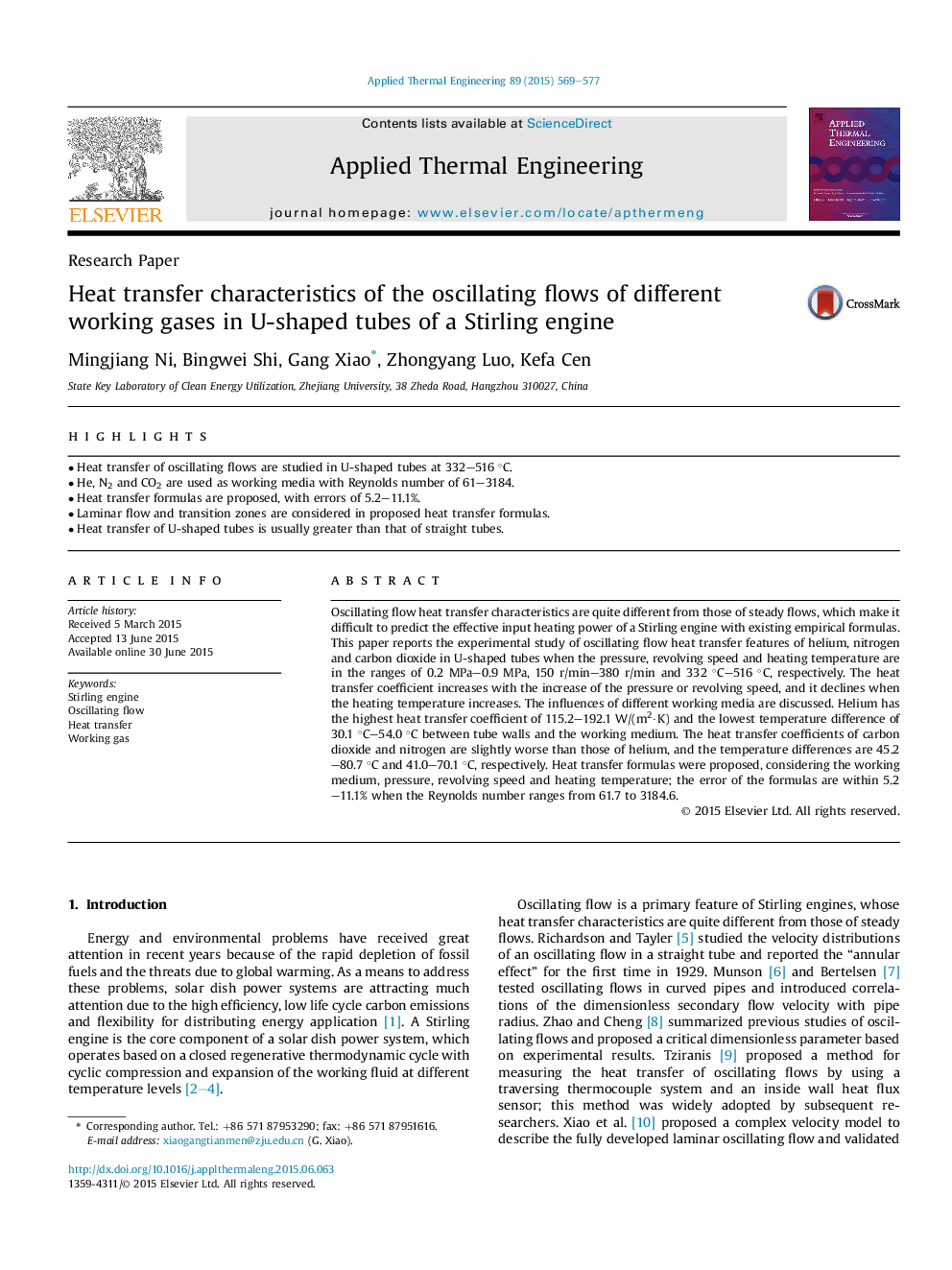| Article ID | Journal | Published Year | Pages | File Type |
|---|---|---|---|---|
| 645392 | Applied Thermal Engineering | 2015 | 9 Pages |
Abstract
Oscillating flow heat transfer characteristics are quite different from those of steady flows, which make it difficult to predict the effective input heating power of a Stirling engine with existing empirical formulas. This paper reports the experimental study of oscillating flow heat transfer features of helium, nitrogen and carbon dioxide in U-shaped tubes when the pressure, revolving speed and heating temperature are in the ranges of 0.2 MPa-0.9 MPa, 150 r/min-380 r/min and 332 °C-516 °C, respectively. The heat transfer coefficient increases with the increase of the pressure or revolving speed, and it declines when the heating temperature increases. The influences of different working media are discussed. Helium has the highest heat transfer coefficient of 115.2-192.1 W/(m2·K) and the lowest temperature difference of 30.1 °C-54.0 °C between tube walls and the working medium. The heat transfer coefficients of carbon dioxide and nitrogen are slightly worse than those of helium, and the temperature differences are 45.2-80.7 °C and 41.0-70.1 °C, respectively. Heat transfer formulas were proposed, considering the working medium, pressure, revolving speed and heating temperature; the error of the formulas are within 5.2-11.1% when the Reynolds number ranges from 61.7 to 3184.6.
Related Topics
Physical Sciences and Engineering
Chemical Engineering
Fluid Flow and Transfer Processes
Authors
Mingjiang Ni, Bingwei Shi, Gang Xiao, Zhongyang Luo, Kefa Cen,
